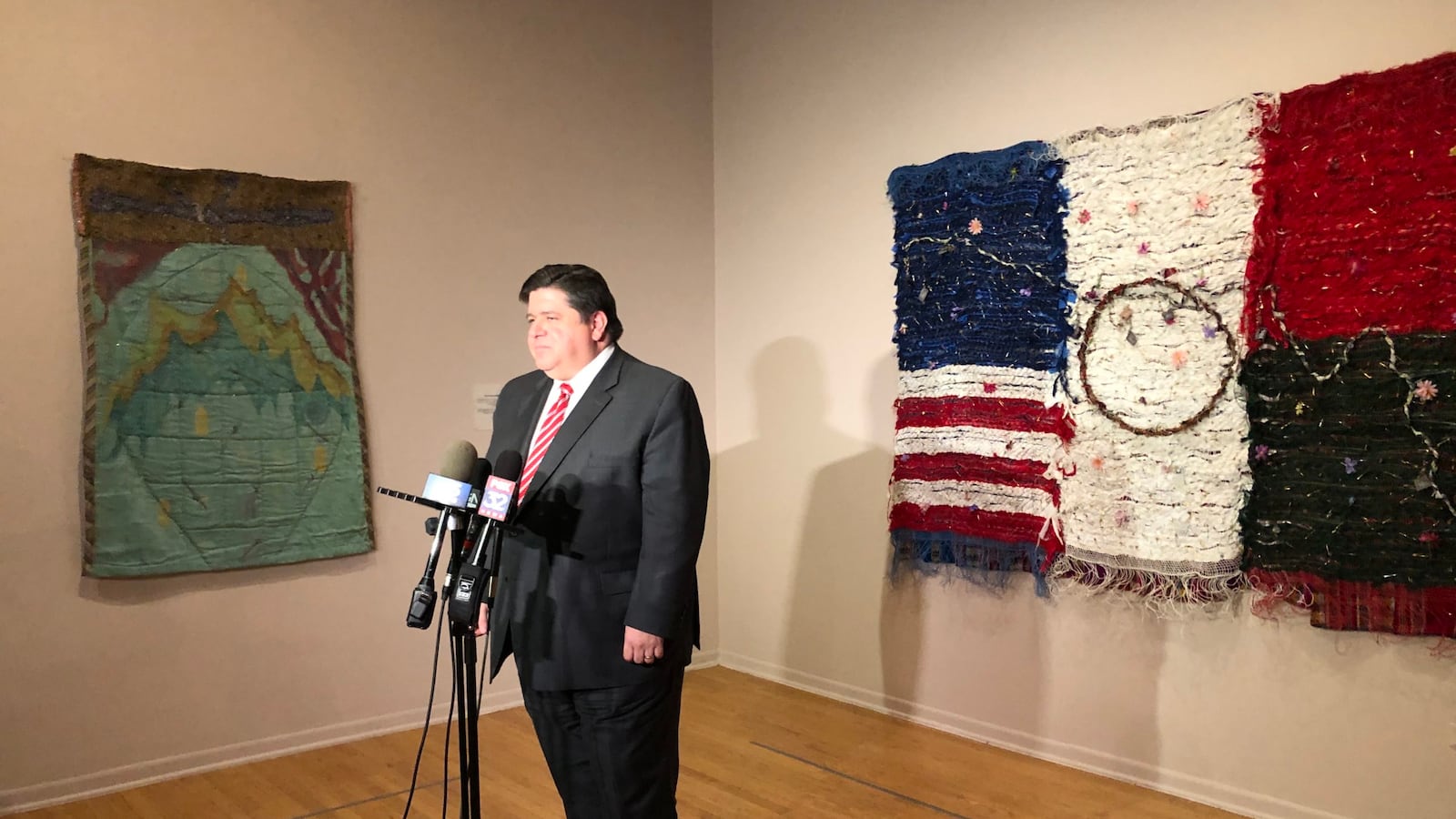Illinois Gov. J.B. Pritzker’s early education agenda is beginning to crystallize, and it will center on expanding home visiting programs statewide and improving pay for a beleaguered set of educators who, in some parts of the state, earn little more than fast-food workers.
Pritzker announced Wednesday that the state will boost home visiting programs by two-thirds, reaching 12,500 more families by 2025 and spending $4.25 million to meet a first-year goal of 500 new families. His declaration was met with enthusiasm by a charged-up room of advocates and providers even while it stopped short of delivering on a campaign promise to build out a universal preschool system for 3- and 4-year-olds statewide.
The governor said that the reality of “constrained budgets” means the state can’t yet afford such an undertaking — and that the early childhood system needs to confront its chronic workforce issues first.
“There’s a lot of capacity building we need to do,” Pritzker said, ticking off low wages and high turnover as issues that undermine efforts to expand programs and improve their quality. “Universal preschool is certainly something that’s important for us to work toward and that I believe in, but we’ve got to start in the earliest years.”
Calling the state’s early education workforce crisis the “elephant in the room” — a statement met with applause — Pritzker said the early childhood office will review compensation around the state with the goal of reaching pay equity between workers in community-run centers and day care centers with public school teachers. The governor said he’s directing a new round of federal money for child care to expand coaching and training for educators and raise pay.
Wednesday’s announcement charged up advocates and providers who’ve been agitating for change in an early education system that has been decimated in the past decade by budget cuts, leadership changes, and a lack of focus.
Maria Whelan, the CEO of Illinois Action for Children, compared the past several years to the mythological hero Sisyphus pushing a boulder up a hill. “I feel today like we are still at a steep hill, but at the top we have a flat spot where we can sit, we can rest, we can celebrate and we can reflect on the fact that we have done good for children and families, particularly the most vulnerable.”
Catherine Main, a lecturer and researcher at the University of Illinois at Chicago College of Education, called it “a new day” for early education in the state, even if the payoffs may not be fully realized for many years. “I feel like we finally have a leader who is saying, this is important, even if we may not see the benefits in my tenure,” she said.
In the past year, the governor has expanded eligibility for a child care assistance program for working families, added $50 million to a block grant program to fund additional preschool slots and salary bumps for teachers, raised reimbursement rates for rural providers, and included $100 million worth of capital investments for early education centers.
In December, Illinois won a competitive $40.2 million federal grant to help it restructure its early learning system. The governor also named a 29-person funding commission tasked with tackling the biggest roadblock in that effort: How to better stitch together fragments of funding sources and a complex web of oversight agencies.
Pritzker said his decision to add universal home visiting to his agenda was supported by a growing body of research that underscores the importance of the first few years of a child’s life on brain development.
“Kids’ brain development starts long before children reach kindergarten,” he said. “It’s often said a parent is a child’s best teacher, and home visiting supports parents in that all-important role.”
Around the country, home visiting programs offer parents of newborns the option of receiving visits from a trained provider — some programs use doulas, others nurses — who can troubleshoot an array of issues, from postpartum depression to food or housing insecurity to early signs of developmental delays in infants.
Because of differences among programs, research is somewhat mixed on the outcomes. But multiple studies have pointed to better health of mothers and infants, reduced rates of child abuse, and improved school performance later on.

